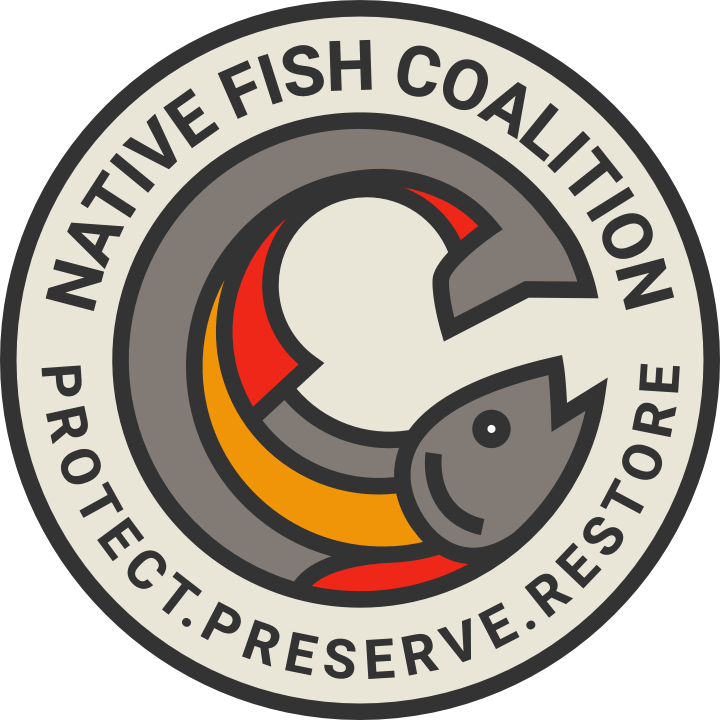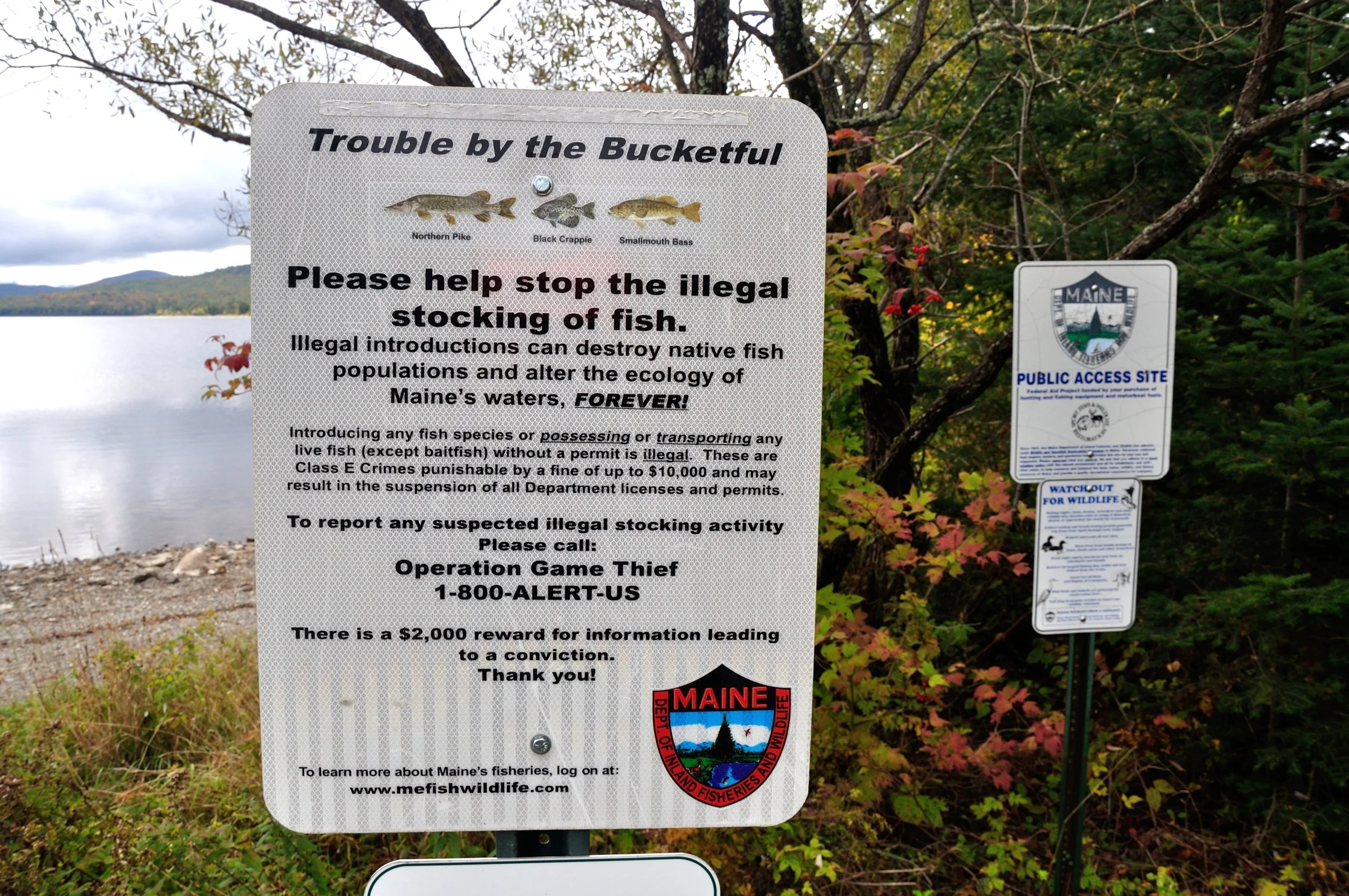NFC Executive Director Bob Mallard on Moving Fish around and Mixed Messages...
Green Lake in Ellsworth Maine where Maine Department of Inland Fisheries and Wildlife stocks nonnative and highly invasive lake trout on top of rare wild native Arctic charr…
“While bucket biology is a huge problem, the Maine Department of Inland Fisheries and Wildlife moves non-native fish around regularly and has for generations...”
NFC Executive Director Bob Mallard has an Op-Ed in the Portland Press Herald (PPH), Morning Sentinel (MS), and Kennebec Journal (KJ), 3 of Maine’s largest daily newspapers. The PPH is the largest paper in Maine, and the MS and KJ are 2 of the largest papers in Maine representing Waterville and Augusta respectively.
The piece was written as a rebuttal to an article published in the Bangor Daily News (BDN) placing all the blame for nonnative fish introductions on anglers. While Bob had a 10-year guest column in the Outdoor section of the BDN at the time, newly installed Outdoor Editor and former Maine Department of Inland Fisheries and Wildlife employee Susan Bard rejected the piece without explanation.
Having written for 3 prior BDN Outdoor editors, Bob had never had an article rejected nor were his challenges to IFW policy ever censored. Bard requested that Bob submit “engaging pieces about fishing,” which was not why he was doing the column. Bob’s intent was to offer a different viewpoint than the typical sporting-centric outdoor column. Unwilling to be censored, Bob resigned his column with the BDN after nearly 20 years of writing Op-ed’s, random pieces, and a recurring guest column.
The piece in question is fact based, impersonal, and an important message in regard to the very real and ever increasing problem with regard to nonnative fish introductions. If we really want anglers not to do something, the powers that be need to lead by example, which is not what they are doing. To expect others not to do what you are doing is not an effective strategy. And as Bob states, just because it’s legal doesn’t mean it’s not harmful…
This shows once again that when one door closes another often opens. Kudos to the Op-Ed staff at Maine Trust for Local News who owns the PPH, MS, and KJ for seeing the value in Bob’s alternative viewpoint to the idea that moving nonnative fish around is solely a problem associated with anglers…
An unsolicted email to Bob from a PPH reader…
Online reader input from CentralMaine.com…
Text as Published
A recent article in another paper about bucket biology, anglers moving fish around, caught my attention. Not because it was inaccurate, but because it told only one side of the story.
While bucket biology is a huge problem, the Maine Department of Inland Fisheries and Wildlife (MDIFW) moves non-native fish around regularly and has for generations. Although no one talks about it, these legal acts have negatively affected wild native fish in the same ways that illegal bucket biology has.
Consider the state-sponsored introduction of non-native landlocked salmon and smelt into the Rangeley Lakes, which contributed to the demise of the largest native Arctic charr population in the contiguous United States. And it was the state that introduced non-native lake trout into Sebago Lake, one of only four native landlocked salmon waters in the state and the namesake water for the species, Salmo salar sebago.
According to MDIFW, there are 202 lakes and ponds with “principal,” or fishable populations, of landlocked salmon. Salmon are “present” in another 113 waters. This represents a roughly 75-fold increase in landlocked salmon populations in Maine, not including rivers and streams. Most are the result of legal introductions, not so-called “bucket biology.”
Neither brown nor rainbow trout are native to Maine. Per MDIFW, browns are “principal” in 123 lakes and ponds and “present” in another 46. Rainbows are “principal” in 23 lakes and ponds and “present” in another six waters. And this does not include rivers and streams. Most brown trout and rainbow trout found in Maine are the result of state sponsored stocking or introductions.
MDIFW stocks non-native landlocked salmon in Moosehead Lake on top of wild native brook trout and lake trout, both of which are already stressed due to illegally introduced white perch and smallmouth bass. Smelt introduced to feed salmon have negatively affected the native lake whitefish, the primary forage for lake trout.
Pierce Pond in Somerset County, arguably the finest big lake wild brook trout fishery east of Rangeley and south of Moosehead, is stocked with non-native landlocked salmon by MDIFW. While defended as a way to take harvest pressure off the wild native brook trout, the salmon put additional stress on them via competition for food and space.
Green Lake in Ellsworth is one of just four native landlocked salmon lakes in the state, one of just 12 remaining native Arctic charr waters in the contiguous United States and the only water in Maine where salmon and charr coevolved. MDIFW is stocking non-native lake trout, the species blamed for the demise of Arctic charr in New Hampshire and Vermont.
In 2003, MDIFW moved non-native smallmouth from Meddybemps Lake into Fourth Machias Lake to bolster the fishery. This was done with trucks used to stock trout in other waters. Both lakes are located in endangered Atlantic salmon watersheds.
Nobody wins when we move fish around. While you may have it your way for a period of time, often someone comes in later and introduces their favorite fish, doing to your fish what your fish did to what was there before.
We have seen it over and over again — non-native salmon introduced over native brook trout, non-native bass introduced on top of native brook trout and landlocked salmon and non-native pike introduced on top of nonnative bass.
Per MDFIFW, “Illegal [fish] introductions can destroy native fish populations and alter the ecology of Maine’s waters, FOREVER!” Doing so, or even being in possession of live fish, excluding baitfish, without a permit is a Class E crime punishable by a fine from $1,000 to $10,000 and the possible suspension of all MDIFW licenses and permits.
By doing what it is telling the public not to do, MDIFW is sending mixed messages. It’s another example of, “Do as we say, not as we do.” And when anglers see illegal fish introductions as bad, but legal introductions as good, or not bad, we are part of the problem.




